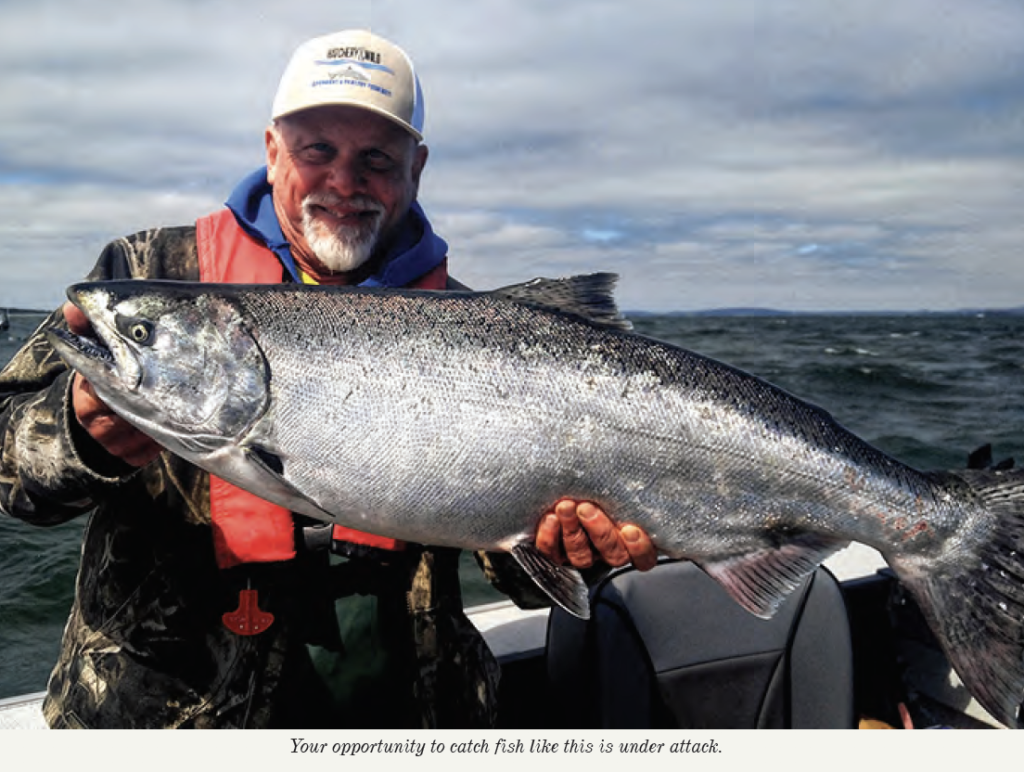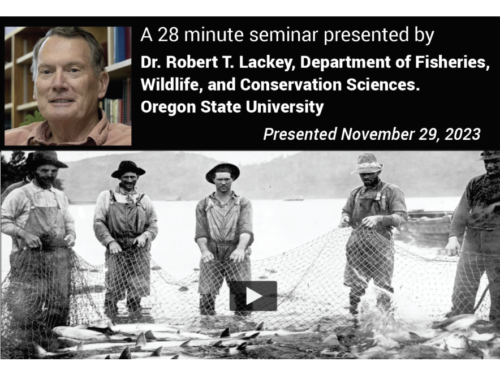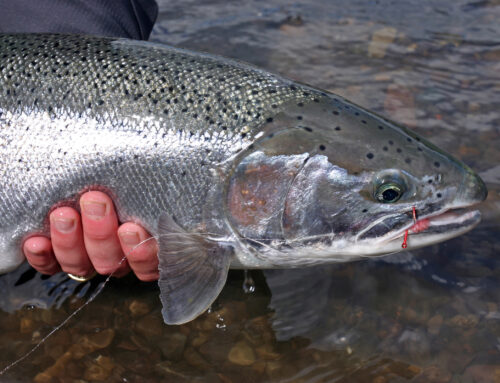Hatchery & Wild Coexist Primer
“Welcome to 2021! Will this year be better than last year? Don’t know, but it couldn’t be any worse,” Owin Hayes, host of Outdoor GPS, January 2, 2021. If Owin was referring to the impacts of a pandemic, political and social chaos, and wildfires, we can only hope he is right. But if he was referring to our opportunity to catch and keep steelhead and salmon, we disagree. The worst may be yet to come!

Sport anglers, and the businesses that support and rely on sport fishing, are in serious trouble. Just look at what is happening in the Puget Sound area and all along Washington’s west coast. Essentially the opportunity to catch and keep a steelhead has gone away. Sure, there are fisheries open for retention, but there are fewer and fewer hatchery fish available for harvest and, more and more angling restrictions. Put those two factors together and the sport angling outlook is quickly becoming bleak.
Sadly, this situation has developed right under our noses with most not realizing what was going on. Like most of you, we are all about doing everything reasonably possible to preserve and enhance wild fish populations and in the early-1990s we started to hear about concerns related to the potential impacts of hatchery fish on wild fish. Fueled by the Endangered Species Act (ESA) listing of 28 West Coast salmon and steelhead stocks in the 1990s a lot of scientific focus was placed on hatchery mitigation and its possible impact of wild fish populations.
Several of the resulting studies hypothesized that to increase wild fish numbers hatchery releases needed to be reduced or eliminated. And with the promise of increased wild fish populations many well-intentioned wild fish advocates jumped on the anti-hatchery bandwagon. Agencies eager to react to the ESA listings and slow rising hatchery costs while appeasing wild fish proponents, started to ratchet down hatchery production. The result was a noticeable decrease in harvest opportunity, but many anglers attributed the loss to environmental conditions like El Niño and held on to the seductive promise of increased wild numbers.
Unfortunately, after decades of lost hatchery production the rebound in wild fish populations has not materialized to a significant degree and certainly has not made up for the loss of hatchery mitigation. Cutting hatchery releases was a double whammy that resulted in substantially fewer fish for harvest without a correlating increase in wild fish numbers. But the call by some wild fish advocates for reductions in hatchery programs has never been louder.
Most concerning is the anti-hatchery movement is gaining strength and influence. According to IRS filing information one of the larger organizations reported total revenues of over $1.6 million in 2019 and in 2013 their total revenue exceeded a whopping $2.5 million. Their war chests are bulging, they have extensive and experienced resources available and have shown themselves to be highly effective. Left unchecked they will likely achieve their goal of leaving the Pacific Northwest devoid of abundant harvestable salmon and steelhead.
It is happening and the recently enacted emergency regulations on Washington’s west coast is proof. Several of these organizations are pompously pointing to the resulting loss of harvest opportunity and harmful impact to the sport fishing community as a “win.”
This should be a wake-up call for everybody that enjoys catching and keeping a salmon or steelhead. And the threat to a way of life, jobs and businesses is not just focused on Washington. Residents and anglers in Oregon, California and Idaho, who want the future to include the opportunity to harvest a salmon or steelhead need to pay attention and get involved.
The angling community, and the many businesses that rely on sport fishing, are suffering from hatchery cutbacks and cannot standby and allow them to continue. It is time to put disagreements, market rivalry and differing opinions aside, lock arms and push-back on the mounting anti-hatchery pressure.
That is the purpose of the Hatchery & Wild Coexist Coalition (HWC) – to provide businesses, organizations and individuals that recognize the importance of hatcheries, and are willing to put other differences aside, to effectively promote hatcheries and their important benefits with one cohesive and loud voice. Together we will influence positive change, divided our hatcheries remain in serious jeopardy.
To be effective the HWC campaign needs an army of knowledgeable and prepared hatchery proponents that will step up and answer the call when needed. That is where you come in. Please share the pro-hatchery perspective and encourage others to join this important campaign to save our hatcheries. Without your support it will not be successful.
We applaud Owin’s optimistic outlook for 2021. He supports HWC, join him, we all need to be in this important battle together!



